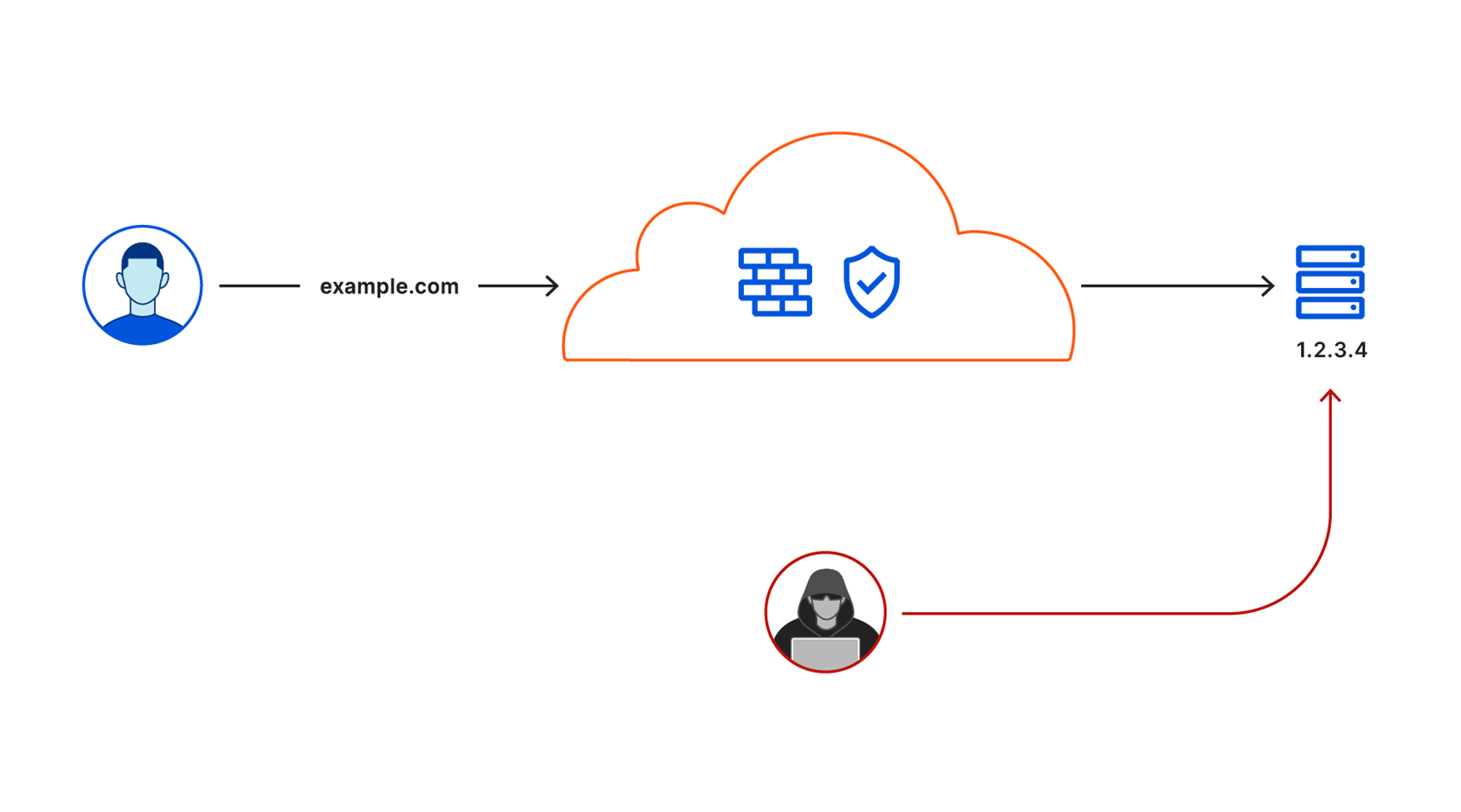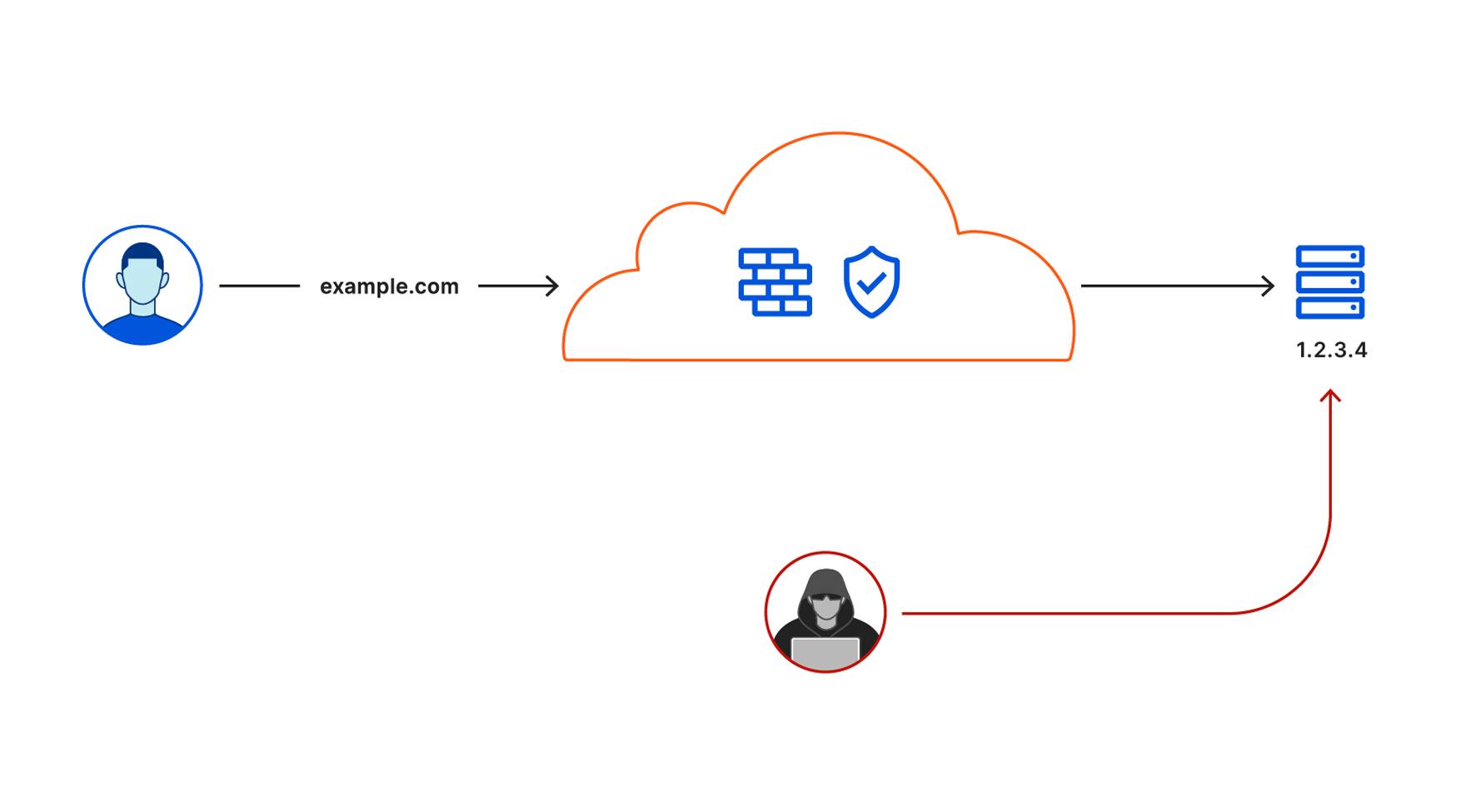Argo Tunnels that live forever

Cloudflare secures your origin servers by proxying requests to your DNS records through our anycast network and to the external IP of your origin. However, external IP addresses can provide attackers with a path around Cloudflare security if they discover those destinations.

We launched Argo Tunnel as a secure way to connect your origin to Cloudflare without a publicly routable IP address. With Tunnel, you don’t send traffic to an external IP. Instead, a lightweight daemon runs in your infrastructure and creates outbound-only connections to Cloudflare’s edge. With Argo Tunnel, you can quickly deploy infrastructure in a Zero Trust model by ensuring all requests to your resources pass through Cloudflare’s security filters.

Originally, your Argo Tunnel connection corresponded to a DNS record in your account. Requests to that hostname hit Cloudflare’s network first and our edge sends those requests over the Argo Tunnel to your origin. Since these connections are outbound-only, you no longer need to poke holes in your infrastructure’s firewall. Your origins can serve traffic through Cloudflare without being vulnerable to attacks that bypass Cloudflare.
However, fitting an outbound-only connection into a reverse proxy creates some ergonomic and stability hurdles. The original Argo Tunnel architecture attempted to both Continue reading
Network Break 305: NVIDIA Unfolds DPU Roadmap; IBM Spins Off Managed Infrastructure Biz
Today's Network Break analyzes NVIDIA's new roadmap for DPUs (also known as SmartNICs), IBM's spin-out of its managed infrastructure business, new security features from Juniper, a whopping judgement against Cisco for patent violations, and more.Network Break 305: NVIDIA Unfolds DPU Roadmap; IBM Spins Off Managed Infrastructure Biz
Today's Network Break analyzes NVIDIA's new roadmap for DPUs (also known as SmartNICs), IBM's spin-out of its managed infrastructure business, new security features from Juniper, a whopping judgement against Cisco for patent violations, and more.
The post Network Break 305: NVIDIA Unfolds DPU Roadmap; IBM Spins Off Managed Infrastructure Biz appeared first on Packet Pushers.
Zero Trust For Everyone

We launched Cloudflare for Teams to make Zero Trust security accessible for all organizations, regardless of size, scale, or resources. Starting today, we are excited to take another step on this journey by announcing our new Teams plans, and more specifically, our Cloudflare for Teams Free plan, which protects up to 50 users at no cost. To get started, sign up today.
If you’re interested in how and why we’re doing this, keep scrolling.
Our Approach to Zero Trust
Cloudflare Access is one-half of Cloudflare for Teams - a Zero Trust solution that secures inbound connections to your protected applications. Cloudflare Access works like a bouncer, checking identity at the door to all of your applications.
The other half of Cloudflare for Teams is Cloudflare Gateway which, as our clever name implies, is a Secure Web Gateway protecting all of your users’ outbound connections to the Internet. To continue with this analogy, Cloudflare Gateway is your organization’s bodyguard, securing your users as they navigate the Internet.
Together, these two solutions provide a powerful, single dashboard to protect your users, networks, and applications from malicious actors.

A Mission-Driven Solution
At Cloudflare, our mission is to help build a better Internet. That Continue reading
Cloudflare Access: now for SaaS apps, too


We built Cloudflare Access™ as a tool to solve a problem we had inside of Cloudflare. We rely on a set of applications to manage and monitor our network. Some of these are popular products that we self-host, like the Atlassian suite, and others are tools we built ourselves. We deployed those applications on a private network. To reach them, you had to either connect through a secure WiFi network in a Cloudflare office, or use a VPN.
That VPN added friction to how we work. We had to dedicate part of Cloudflare’s onboarding just to teaching users how to connect. If someone received a PagerDuty alert, they had to rush to their laptop and sit and wait while the VPN connected. Team members struggled to work while mobile. New offices had to backhaul their traffic. In 2017 and early 2018, our IT team triaged hundreds of help desk tickets with titles like these:

While our IT team wrestled with usability issues, our Security team decided that poking holes in our private network was too much of a risk to maintain. Once on the VPN, users almost always had too much access. We had limited visibility into what happened on Continue reading
Validating Data in GitOps-Based Automation
Anyone using text files as a poor man’s database eventually stumbles upon the challenge left as a comment in Automating Cisco ACI Environments blog post:
The biggest challenge we face is variable preparation and peer review process before committing variables to Git. I’d be particularly interested on how you overcome this challenge?
We spent hours describing potential solutions in Validation, Error Handling and Unit Tests part of Building Network Automation Solutions online course, but if you never built a network automation solution using Ansible YAML files as source-of-truth the above sentence might sound a lot like Latin, so let’s make it today’s task to define the problem.
Validating Data in GitOps-Based Automation
Anyone using text files as a poor man’s database eventually stumbles upon the challenge left as a comment in Automating Cisco ACI Environments blog post:
The biggest challenge we face is variable preparation and peer review process before committing variables to Git. I’d be particularly interested on how you overcome this challenge?
We spent hours describing potential solutions in Validation, Error Handling and Unit Tests part of Building Network Automation Solutions online course, but if you never built a network automation solution using Ansible YAML files as source-of-truth the above sentence might sound a lot like Latin, so let’s make it today’s task to define the problem.
The Future of the Network is Autonomous: WFH Strategies Prepare for Self-Driving Networks
Moving at digital speed and at scale will not be possible without an autonomous network.Underhanded Code and Automation
So, software is eating the world—and you thought this was going to make things simpler, right? If you haven’t found the tradeoffs, you haven’t looked hard enough. I should trademark that or something!  While a lot of folks are thinking about code quality and supply chain are common concerns, there are a lot of little “side trails” organizations do not tend to think about. One such was recently covered in a paper on underhanded code, which is code designed to pass a standard review which be used to harm the system later on. For instance, you might see at some spot—
While a lot of folks are thinking about code quality and supply chain are common concerns, there are a lot of little “side trails” organizations do not tend to think about. One such was recently covered in a paper on underhanded code, which is code designed to pass a standard review which be used to harm the system later on. For instance, you might see at some spot—
if (buffer_size=REALLYLONGDECLAREDVARIABLENAMEHERE) {
/* do some stuff here */
} /* end of if */Can you spot what the problem might be? In C, the = is different than the ==. Which should it really be here? Even astute reviewers can easily miss this kind of detail—not least because it could be an intentional construction. Using a strongly typed language can help prevent this kind of thing, like Rust (listen to this episode of the Hedge for more information on Rust), but nothing beats having really good code formatting rules, even if they are apparently arbitrary, for catching Continue reading
MikroTik – RouterOSv7 first look – L3 ASIC performance testing

When MikroTik announced the CRS3xx series switches a few years ago, one of the most exciting aspects of that news release was the prospect of L3 forwarding in hardware on very inexpensive devices.
A quick review of the Marvell Prestera ASIC family showed a number of advanced routing, switching, MPLS and VxLAN capabilites.
Fast forward to 2020, where MikroTik has started to enable some of those features in RouterOS v7 beta.
Now we can finally take some of the CRS3xx switches and test their capabilities with L3 forwarding performance in hardware
CRS 3xx series capabilities overview
Before getting into the testing, it’s probably helpful to review some of the basic specs and capabilities of the CRS3xx switch line.
Here is a chart from MikroTik that outlines ACL rule count, Unicast FDB entries and MTU size.
CRS 3xx model comparison

MIkroTik has been working on the development of the features listed below to offload into hardware.
For the tests in this article, we’ll be using IPv4 Unicast and Inter-VLAN routing.
Supported feature list

Currently, the following switches are supported.
For the testing in this article, we are using the CRS317-1G-16S+
Switches supported by 7.1beta2


Performance testing – overview
The physical Continue reading
Leaks on Apple Gadgets Now Confusing And Pointless
 Why bother clicking ?
Why bother clicking ?
Introducing Cloudflare One


Today we’re announcing Cloudflare One™. It is the culmination of engineering and technical development guided by conversations with thousands of customers about the future of the corporate network. It provides secure, fast, reliable, cost-effective network services, integrated with leading identity management and endpoint security providers.
Over the course of this week, we'll be rolling out the components that enable Cloudflare One, including our WARP Gateway Clients for desktop and mobile, our Access for SaaS solution, our browser isolation product, and our next generation network firewall and intrusion detection system.
The old model of the corporate network has been made obsolete by mobile, SaaS, and the public cloud. The events of 2020 have only accelerated the need for a new model. Zero Trust networking is the future and we are proud to be enabling that future. Having worked on the components of what is Cloudflare One for the last two years, we’re excited to unveil today how they’ve come together into a robust SASE solution and share how customers are already using it to deliver the more secure and productive future of the corporate network.
What Is Cloudflare One? Secure, Optimized Global Networking
Cloudflare One is a comprehensive, cloud-based network-as-a-service solution Continue reading
The Week in Internet News: U.S. Lawmakers Want to Break Up Big Tech Firms

Break ‘em up: A report released by the Democrats on the U.S. House of Representatives Judiciary Committee has accused Amazon, Apple, Facebook, and Google of abusing their monopoly power and has called the four companies to effectively be broken up, the New York Times reports. The report calls the four companies “the kinds of monopolies we last saw in the era of oil barons and railroad tycoons.”
India wants in: Meanwhile, Google is reportedly facing an antitrust investigation in India for allegedly abusing its Android operating system’s position in the smart television market, The Economic Times of India says. This is the fourth major antitrust case Google has faced in the huge India market.
Hackers for hire: A mercenary hacking group is operating throughout the Middle East, with Saudi diplomats, Sikh separatists, and Indian business executives among those being targeted, Al Jazeera reports. The diversity of the group Bahamut’s activities makes it appear that it’s not working for a single group or nation, researchers say.
Ready for takeoff: SpaceX’s space-based Internet service is nearly ready for use after the company’s latest launches of Starlink satellites, CEO Elon Musk says. SpaceX has delivered 60 additional satellites into low-Earth orbit this Continue reading
What is Cloudflare One?

Running a secure enterprise network is really difficult. Employees spread all over the world work from home. Applications are run from data centers, hosted in public cloud, and delivered as services. Persistent and motivated attackers exploit any vulnerability.
Enterprises used to build networks that resembled a castle-and-moat. The walls and moat kept attackers out and data in. Team members entered over a drawbridge and tended to stay inside the walls. Trust folks on the inside of the castle to do the right thing, and deploy whatever you need in the relative tranquility of your secure network perimeter.
The Internet, SaaS, and “the cloud” threw a wrench in that plan. Today, more of the workloads in a modern enterprise run outside the castle than inside. So why are enterprises still spending money building more complicated and more ineffective moats?
Today, we’re excited to share Cloudflare One™, our vision to tackle the intractable job of corporate security and networking.

Cloudflare One combines networking products that enable employees to do their best work, no matter where they are, with consistent security controls deployed globally.
Starting today, you can begin replacing traffic backhauls to security appliances with Cloudflare WARP and Gateway to filter Continue reading